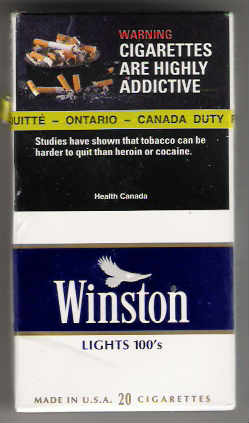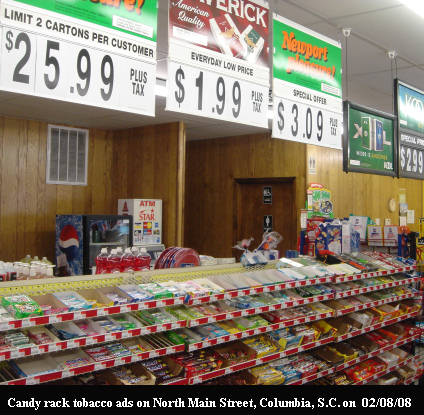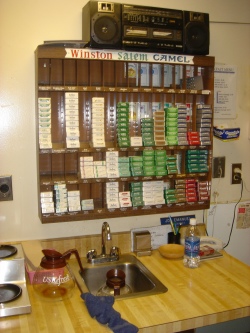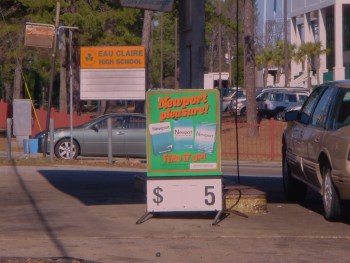
SC Legislature Values Civil War Relics More than Children

South Carolina's legislators took an oath to protect the health and lives of the state's citizens, especially its children. But if spending fairly expresses priorities, Civil War fanatics within the legislature are vastly more concerned with honoring 5 of the state's 338 years of history than protecting its children from a lifetime of servitude as slaves to nicotine.
A just released report ranks South Carolina 51st nationally in youth tobacco prevention spending. While the Confederate battle flag has flown 30 feet above statehouse grounds since July 1, 2000, there is no flag or ragging battle to save the state's youth from a chemical that Canadian cigarette pack warnings assert "can be harder to quit than heroin or cocaine."
South Carolina's political leaders, who have shown no reservations about accepting campaign contributions from the industry responsible for 20% of the state's premature deaths (see FollowTheMoney.org for 2000, 2002, 2004, 2006, 2008), either don’t appreciate that nicotine enslaves the same brain dopamine pathways as heroin and cocaine, or do not care.
According to a coalition report released yesterday by national health non-profits that include the American Cancer Society, American Heart Association and American Lung Association, on the tenth anniversary of the national tobacco settlement, which provided SC nearly $1 billion in proceeds, during fiscal year (FY) 2009 South Carolina will spend just $1 million on youth tobacco prevention. The entire million is coming from a federal grant.
According to the report, Centers for Disease Control (CDC) calculations contend that SC’s annual prevention budget should be $62 million. Spending just 1.6% of the CDC recommendation ranks SC dead last nationally.
Since 2000, the South Carolina legislature has reportedly spent $30 million preparing to showcase a single civil war relic in North Charleston, the Confederate submarine Hunley. Since 2000 the legislature has spent just $12.5 million on youth nicotine addiction prevention (FY2000 $1.8million; FY2001 $1.8 million; FY2002 $1.6 million; FY2003 $2 million; FY2004 $0 spending; FY2005 $0 spending; FY2006 $0 spending; FY2007 $2 million; FY2008 $3.3 million), most of which came from federal grants.
South Carolina continues to have the nation's lowest state cigarette tax, tempting youth with America's cheapest nicotine. Although a 2006 poll found that 71% surveyed favored a cigarette tax increase, Governor Sanford vetoed legislation in May which would have increased the per pack sales tax from 7 to 57 cents, with $5 million in new revenues dedicated to youth tobacco use prevention.
The national average per-pack tax is now $1.19. There are claims that cheap SC cigarettes are increasingly being black-marketed by gangs in states having significantly higher taxes. Cheap SC cigarettes sold on neighborhood streets undermine youth smoking prevention efforts in affected states.
The coalition's report indicates that 17.8% of SC high school students smoke, that annual SC smoking related health care costs total $1.09 billion, that 5,900 South Carolinians die annually of tobacco related diseases, while the tobacco industry spends $280 million annually marketing nicotine products in S.C.
By far, the vast majority of the industry's $280 million SC marketing budget (roughly 80%) is spent in neighborhood stores. Nationally, the average convenience store sells $364,446 in nicotine products annually. According to the CDC, 75% of teens enter a convenience store at least once weekly and their average visit is 16 minutes. While candy is what 81% of teens "usually" purchase, according to a study by the National Association of Convenience Stores, 27% of teens age 16-20 "usually" purchase cigarettes or other tobacco products.
 Convenience store nicotine marketing in South Carolina is totally out of control. Passing youth are bombarded by roadway nicotine product marketing signs, gas pump signs, exterior store signs, door signs, and once inside, the signs all but wrap their arms around youth, especially at check-out counters. Worst of all, far too many SC convenience stores are engaged in intentional youth targeting by hanging signs directly above candy displays.
Convenience store nicotine marketing in South Carolina is totally out of control. Passing youth are bombarded by roadway nicotine product marketing signs, gas pump signs, exterior store signs, door signs, and once inside, the signs all but wrap their arms around youth, especially at check-out counters. Worst of all, far too many SC convenience stores are engaged in intentional youth targeting by hanging signs directly above candy displays.
These signs assault young minds with the message that you have not yet lived, tasted real flavor or experienced true pleasure until you've smoked cigarettes. Some contain pictures suggesting that smoking will help you make new friends, that it's how to be true, cool and how to stir the senses. The big yellow "We Card" sign is designed to scream that smoking is an adult activity, that if you want to feel like an adult you need to smoke.
Whether consciously seen or not, the advertisements register inside the teen's subconscious mind, where their gathering weight eventually culminates in a "what the heck" moment, during which the teen decides to see what all the fuss is about.
While the teen's body will likely rebel against the scores of toxins assaulting it, beneath the burning, coughing and dizziness their brain will experience a dopamine explosion that will likely soon have the them returning to steal more. Contrary to pharmaceutical industry quitting product marketing, most recently Chantix, breaking and staying free is not easy. Statistically, roughly half of adult smokers already know the cause of death that will be printed on their death certificate - smoking.
 SC's Clean Indoor Air Act is a horrible and deadly joke. Unless prohibited by the local school board, it allows smoking in public schools inside "private offices and teacher lounges which are not adjacent to classrooms or libraries," unless prohibited, in allows smoking inside employee break areas in health care facilities, and it exempts Senate and House office buildings on statehouse grounds. Cigarettes continue to be sold on SC statehouse grounds.
SC's Clean Indoor Air Act is a horrible and deadly joke. Unless prohibited by the local school board, it allows smoking in public schools inside "private offices and teacher lounges which are not adjacent to classrooms or libraries," unless prohibited, in allows smoking inside employee break areas in health care facilities, and it exempts Senate and House office buildings on statehouse grounds. Cigarettes continue to be sold on SC statehouse grounds.
Roughly 90% of new smokers are children or teens. Waiting for the South Carolina legislature to come to their rescue looks hopeless. While 26 FBI "Operation Lost Trust" legislative convictions in the 1990s should have changed the statehouse's culture of corruption it hasn't. Sadly, the loyalties of many appear to continue to lie with political contributors.
Sullivan's Island's Town Council demonstrated boldness and courage in being the first jurisdiction to pass an ordinance protecting all indoor workers against the hazards posed by the 4,000 chemicals released by burning tobacco. Aided by rulings from our state's Supreme Court, the Island's leadership example is now slowly sweeping our state. Bold local leadership that's willing to think outside the box is again needed if we are to insulate our youth from marketing that seeks to enslave them. How? Here are a few examples:
 1. Use zoning to control exterior tobacco product sales signs. The regulation will need to apply to all product signs equally, so as to not discriminate against any one product when it comes to commercial speech, which is protected by the First Amendment.
1. Use zoning to control exterior tobacco product sales signs. The regulation will need to apply to all product signs equally, so as to not discriminate against any one product when it comes to commercial speech, which is protected by the First Amendment.
2. Pass an ordinance denying youth access to all tobacco sales locations. This would compel tobacco merchants to make a choice between selling a highly addictive chemical to adults or candy to children. If smoking nicotine truly is as addictive as heroin, then doesn't it violate a child's basic human rights to market it in their presence?
3. Pass a tobacco sales license ordinance as scores of communities across the nation have done. The license fee can be fixed or tied to annual tobacco sales or to the store's square footage. Some jurisdictions are dedicating 100% of revenues toward youth nicotine dependency prevention.
4. Pass an ordinance raising the smoking age to 19. Local high schools are filled with eighteen year-old students who can legally purchase tobacco for underclassmen. This suggestion raises a possible state pre-emption challenge but our Courts may rule that the state's purchase age reflects a minimum standard, not maximum.
5. Pass an ordinance requiring removal of all tobacco advertising from all library magazines. Most magazines now have the technologly to do selective binding. It allows for creation of multiple advertising versions of the magazine, which are then targeted at specific audiences. Tobacco ads in libraries frequented by youth are not there by chance.
6. Pass an ordinance requiring all movie theater advertising to notify readers when any G or PG or PG13 rated movie contains smoking. Research shows that youth Hollywood idol movie smoking has devastating tobacco use consequences. The tobacco industry has a storied history of purchasing product placement and paying for smoking in movies. In 2007 alone, PG-13 movies delivered an estimated 2.7 billion tobacco impressions to U.S. theater audiences of all ages.
7. There is no U.S. addiction warning. You will not find any store in SC which warns youth that nicotine is highly addictive. Consider using public buildings and parks to place signs teaching youth the true power of nicotine. I recommend the following warning: Cigarettes and oral tobacco products contain nicotine and are highly addictive. Studies have shown that tobacco can be harder to quit than heroin or cocaine. Research shows that it may only take using tobacco one or two times before your brain begins begging for more. Once hooked, quitting is so challenging that roughly half of adult smokers are smoking themselves to death, each an average of 13 (males) to 14 (females) years early .
8. Create a citizens committee of interested persons (including youth) to investigate and advise council on how best to protect youth from those who would profit by addicting them.

